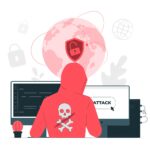Hot take: AI won’t steal your job—someone using AI will. The fastest way to stay valuable is to learn how these tools change work and position yourself on the “design, direct, and decide” side of the stack.
This guide breaks down 10 AI tool categories reshaping jobs, the tasks they automate, your real risk level, and a concrete playbook to adapt—starting today.

The Big Picture (2025 → 2030)
- Automation targets tasks, not roles. Jobs with high volumes of repeatable, rules-based work are first in line.
- Human moat = judgment + context + trust. People who frame problems, set constraints, evaluate trade-offs, and own outcomes keep the leverage.
- Your edge: become the person who chooses, configures, and governs the AI—not the person replaced by it.
1) AI Coding Copilots & Autonomous Devs
What they do: Generate boilerplate, tests, refactors, bug fixes; some agents can plan and ship small features end-to-end.
Who’s at risk: Junior devs focused on CRUD and glue code.
Risk level by 2030: High for rote tasks, medium overall.
How to adapt
- Move up-stack: systems design, secure architectures, performance, integrations.
- Learn AI pair-programming workflows: prompt planning, unit-test first, iterative specs, and tool sandboxing.
- Add DevEx/Platform skills: CI/CD, observability, feature flags.
Portfolio project: “Ship a production microservice in 48h using a copilot—include tests, metrics, and a postmortem.”
2) AI Office Assistants & Admin Automation
What they do: Schedule, summarize, draft emails/docs, extract data, trigger workflows across apps.
Who’s at risk: Executive assistants, operations coordinators, entry-level analysts doing repetitive coordination.
Risk level: High for pure admin work.
How to adapt
- Become an Automation Orchestrator: specialize in RPA/no-code stacks (Zapier/Make, native “Copilot” add-ins, browser automation).
- Build data hygiene + governance habits (naming, access, retention).
Portfolio project: “Automate a weekly ops report from 3 sources with approvals and audit trails.”
3) AI Customer Support Agents (Chat + Voice)
What they do: Tier-0/1 support, knowledge-base answers, refunds within policy, and call notes.
Who’s at risk: L1 agents measured on handle time.
Risk level: High at the front line; low for escalations.
How to adapt
- Pivot to Customer Success and Bot Trainer roles: conversation design, guardrails, escalation logic, and content ops.
- Double down on de-escalation and retention skills.
Portfolio project: “Design a support bot with evaluation prompts, safe replies, and deflection KPIs.”
4) AI Content & Marketing Generators
What they do: Drafts for blogs, ads, captions, landing page copy; generate images/video variations; SEO briefs.
Who’s at risk: Generalist copywriters and thumbnail/asset designers producing volume pieces.
Risk level: High for commodity content.
How to adapt
- Own creative direction + brand voice systems (tone kits, narrative frameworks).
- Master data-driven iteration: A/B tests, lift analysis, creative pipelines.
Portfolio project: “Run a 30-day ad lab: 100 AI-assisted variants, report on winners and lessons.”
5) AI Sales SDRs & Outreach Agents
What they do: Lead research, personalize emails, call summaries, CRM hygiene, and meeting scheduling.
Who’s at risk: SDRs focused on volume outbound.
Risk level: Medium-High.
How to adapt
- Become a consultative seller: discovery, objection handling, and ROI models.
- Learn PLG + data signals (product usage triggers, scoring, intent).
Portfolio project: “Build an AI-assisted outbound playbook with trigger-based messaging.”
6) AI Finance & Accounting Automation
What they do: Reconciliation, expense audit, invoice capture, variance detection, cash-flow projections.
Who’s at risk: Bookkeeping and basic FP&A analysts.
Risk level: Medium-High for routine tasks.
How to adapt
- Specialize in scenario modeling, controls, compliance, and analytics (SQL, Python).
- Own finance data pipelines and auditability.
Portfolio project: “Automated monthly close with anomaly alerts and drill-downs.”
7) AI Legal Drafting & Contract Ops
What they do: Clause suggestions, redlines, risk flags, summary memos, playbook enforcement.
Who’s at risk: Paralegals and junior counsel doing template work.
Risk level: Medium (regulation slows full automation).
How to adapt
- Focus on negotiation, strategy, and domain nuance (IP, fintech, health).
- Build contract playbooks + policy guardrails for AI.
Portfolio project: “AI-assisted NDA/MSA playbook with fallback clauses and risk tiers.”
8) AI HR & Recruiting
What they do: JD writing, resume screening, scheduling, interview summaries, engagement nudges.
Who’s at risk: Coordinators and screeners.
Risk level: Medium-High.
How to adapt
- Own talent strategy: structured interviews, scorecards, calibration, and employer brand.
- Govern bias, fairness, and audit trails.
Portfolio project: “Bias-aware screening pipeline with fairness checks and human-in-the-loop gates.”
9) AI Design & Creative Suites
What they do: Generate layouts, social assets, brand kits, mockups, motion snippets.
Who’s at risk: Asset-factory designers.
Risk level: High for production work; Low for strategy.
How to adapt
- Become an art/UX director: research, insight synthesis, design systems, prototyping.
- Use AI for concept exploration, not final judgment.
Portfolio project: “Ship a brand system from zero to style guide using AI explorations.”
10) AI Data Analysis & BI Agents
What they do: Natural-language queries, auto-charts, SQL generation, summarizing dashboards, anomaly alerts.
Who’s at risk: Analysts doing descriptive reporting.
Risk level: Medium-High for “pull and plot” work.
How to adapt
- Master causal inference, experiment design, and data storytelling.
- Build governed metrics layers (semantic models, lineage, quality checks).
Portfolio project: “Self-serve analytics hub with validated metrics and prompt-to-SQL.”
The Adaptation Blueprint (what to learn now)
A. Career Positioning
- From executor → orchestrator. Your value is selecting tools, shaping prompts, validating outputs, and owning outcomes.
- Niche + AI > AI alone. Pair a domain (health, fintech, logistics, education, African telecom, etc.) with AI.
B. Skill Stack (core)
- Prompt design & task decomposition (role + constraints + examples + evals).
- Automation building (no-code first, then light scripting in Python/JavaScript).
- Data literacy (SQL, spreadsheets, basic stats, experiment design).
- Systems thinking (APIs, events, retries, observability, cost control).
- AI governance (privacy, security, bias, provenance, approvals).
C. Tool Fluency (category-level)
- One copilot (coding or docs), one RPA/automation suite, one BI tool, one vector/KB tool, and a model evaluation method.
90-Day Personal Upskilling Plan
Weeks 1–2: Foundations
- Ship 3 micro-automations (email → sheet, sheet → report, calendar → summary).
- Learn the CLEAR prompt frame: Context, Limits, Examples, Actions, Review.
Weeks 3–4: Data & Evaluation
- Build a small metrics layer (define 5 metrics; document sources/owners).
- Create an AI output rubric (accuracy, safety, tone, latency, cost).
Weeks 5–6: Domain Project
- Choose a niche (e.g., fintech in East Africa; healthcare ops).
- Deliver an AI-assisted workflow with a before/after KPI (time saved, errors reduced).
Weeks 7–8: Portfolio & Proof
- Publish a public case study: architecture, prompts, errors, lessons, and ROI.
- Add a 2-minute Loom walkthrough.
Weeks 9–12: Specialize
- Pick one “moat” skill (security, compliance, experimentation, design systems).
- Mentor one colleague/friend—teaching cements mastery.
AI-Ready Resume Bullets (plug-and-play)
- “Reduced monthly close time 42% by automating reconciliations and anomaly reviews; implemented human-in-the-loop approvals and audit logs.”
- “Increased ad ROAS 28% via AI-generated creative variations and a weekly test cadence; rolled out brand-safe prompt kits.”
- “Cut support backlog 60% by launching a retrieval-augmented bot with escalation rules and quality rubrics.”
Ethics, Security & Cost (non-negotiables)
- Privacy by design: least privilege, masking, opt-outs, data retention policies.
- Attribution & IP: track sources; keep human accountability.
- Bias checks: measure and mitigate demographic harms—especially in hiring, lending, and healthcare.
- Cost control: log tokens/calls; set budgets and alerting.
Roles to Pivot Into (by 2030)
- AI Automation Strategist / Orchestrator
- Customer Experience + Bot Trainer
- AI Product Ops / Governance
- Data Product Manager / Analytics Engineer
- Creative Director (AI-assisted)
- Solutions Architect (AI + domain)
Quick Self-Assessment
- Do >50% of your weekly tasks follow a template, rule, or checklist? Automatable.
- Can you show how your work changes a business KPI? Defensible.
- Are you the person who configures, audits, and explains the AI? Promotable.
Bottom Line
By 2030, the winning careers won’t be “anti-AI” or “AI-only.” They’ll be AI-augmented with domain depth. Start small, publish your wins, and graduate from doing tasks to designing systems that do tasks. That’s the moat.




